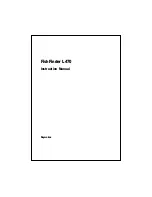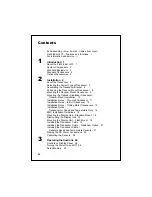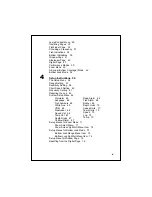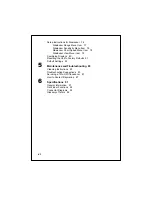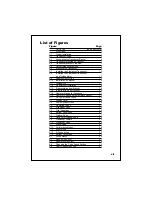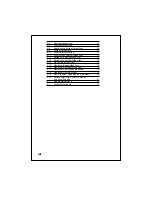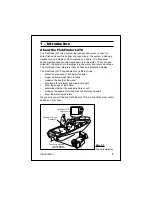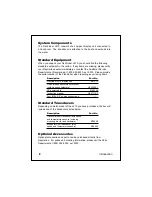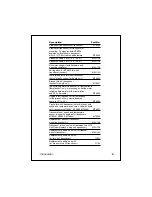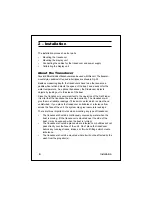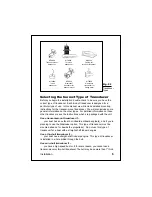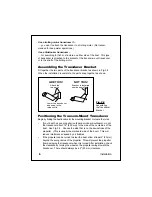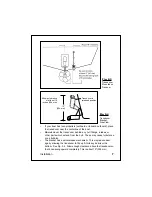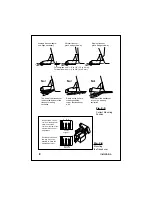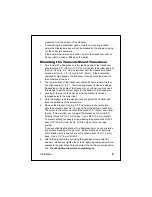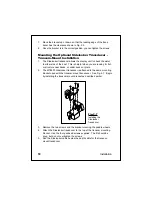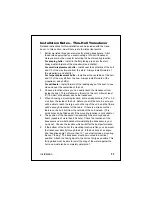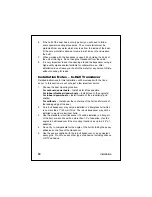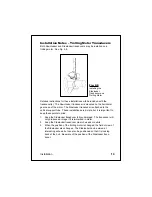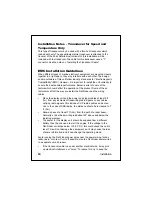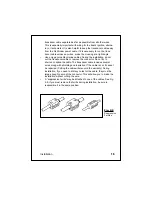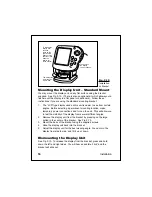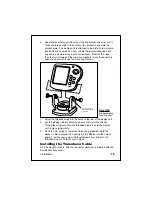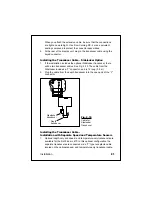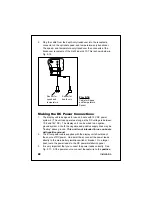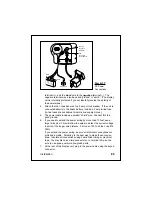
Installation
9
measured from the bottom of the transom.
•
If considering the Sidelooker option, look for a mounting location
where the Sidelooker array will not be blocked by the engine housing
or other mounted hardware.
•
If the boat will be carried on a trailer, be sure the transducer will not
hit any rollers, bunks or fittings on the trailer.
Mounting the Transom-Mount Transducer
1.
On a boat with a fiberglass hull, the leading edge of the transducer
should extend 1/8" (3.2 mm) to 1/4" (6 mm) below the bottom edge of
the hull. See Fig. 2-5. On an aluminum hull, the transducer should
extend a bit more – 1/4" (6 mm) to 3/8" (9 mm). If the boat will be
operated at high speeds, the transducer may be mounted closer to
the centerline of the hull.
2.
The lower surface of the transducer should tilt down toward the rear
at a slight angle (2° to 5°). The mounting bracket includes a wedge.
Depending on the angle of the transom on your boat, you may need
this wedge to get the correct angle for the bottom of the transducer.
3.
Looking at the rear of the boat, be sure the bracket is vertical
(perpendicular to the water line).
4.
Hold the bracket (and the wedge, if used) against the transom and
trace the positions of the screw slots.
5.
Remove the bracket. See Fig. 2-6. The screws in the outer slots
should be placed about 1/4" (6 mm) up from the bottom of each slot.
The screw in the center slot should be placed 1/4” (6 mm) down from
the top. (This will allow you to adjust the bracket up or down a bit.)
Drill pilot holes 3/4" (19.1 mm) deep. Use a 9/64" (3.6 mm) drill bit.
To prevent drilling too deeply, wrap masking tape around the drill bit
about 7/8" (22 mm) from the tip. Drill in only as far as the tape
marker.
If you are attaching the bracket to a fiberglass hull, you can minimize
any surface cracking of the gel coat. Before drilling each pilot hole,
drill a shallow hole (chamfer) at each location about 1/16" (1.5 mm)
deep. Use a 1/4" (6 mm) drill bit.
6.
Attach the bracket to the hull using the panhead screws with flat
washers. Before you tighten the screws, apply a good-quality marine
sealant to the pilot holes. This will protect the hull from water penetra-
tion.
Do not tighten the screws completely yet.

